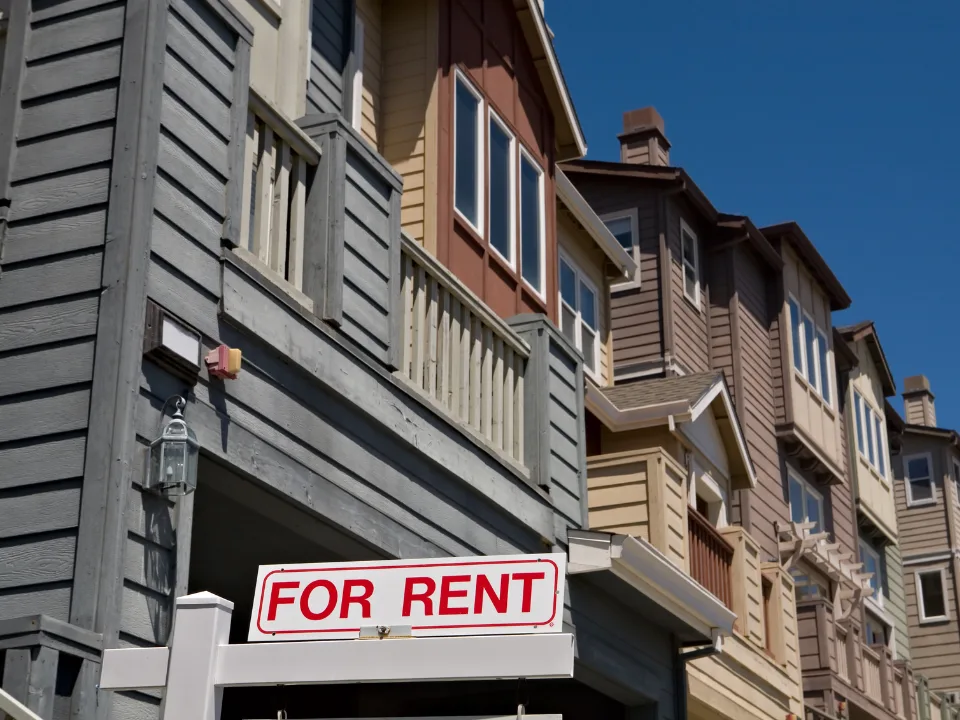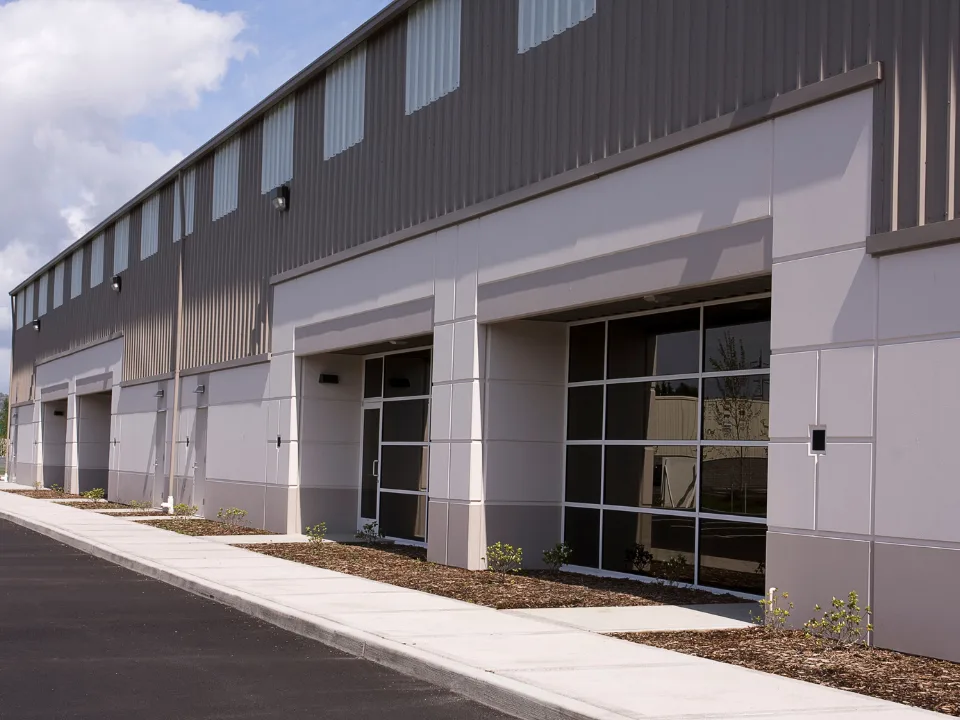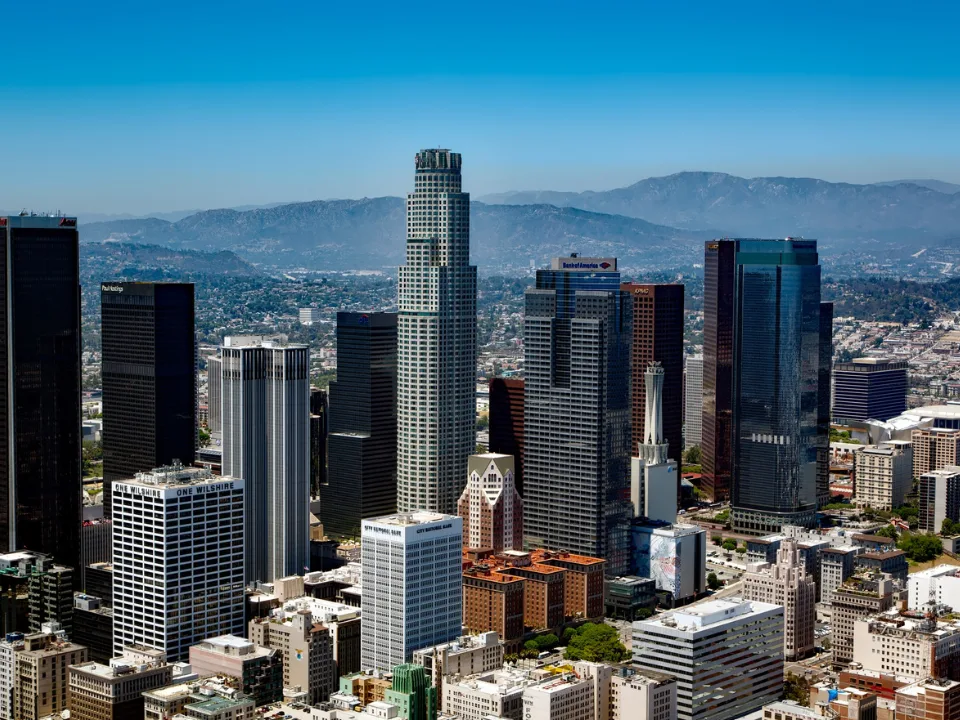- Bay Area metros—San Francisco, Oakland, and San Jose—saw annual job losses through April 2025, continuing a multi-month trend.
- Midwest cities such as St. Louis, Kansas City, Des Moines, and Milwaukee also registered mild job losses, signaling broader regional economic challenges.
- Top-performing job markets included New York, Houston, and Philadelphia, with New York adding 81,000 jobs year-over-year.
- Metro-level job gains are slowing nationally: Only one market exceeded 50,000 new jobs, and 22 metros posted annual job losses.
Bay Area and Midwest Struggles
Job losses in the Bay Area continued into April, marking a persistent slowdown across San Francisco, Oakland, and San Jose. According to RealPage, this decline highlights a regional trend that’s been visible since the start of 2025. Similarly, several Midwest markets—including St. Louis, Des Moines, Milwaukee, and Kansas City—have begun to show signs of employment contraction, compounding concerns over economic recovery in middle-America metros.
Top Markets Still Adding Jobs
Despite regional setbacks, the broader US labor market is still generating jobs, particularly in major metros. Nine of the top 10 job-creating markets from March returned to the leaderboard in April. New York remains the leader, gaining 81,000 jobs year-over-year—though that’s down more than 60,000 jobs from April 2024. Houston took the #2 spot from Dallas, while Philadelphia climbed three spots to #4.
Other notable movers included Salt Lake City, which rejoined the top 10 by increasing its job gain total by 6,000 from March and by 8,600 year-over-year.
In total, the top 10 markets added 347,400 jobs in the year-ending April—down 24.1% from the same group last year. The next tier of markets (#11–#20) saw even steeper declines, with job gains down nearly 29%.
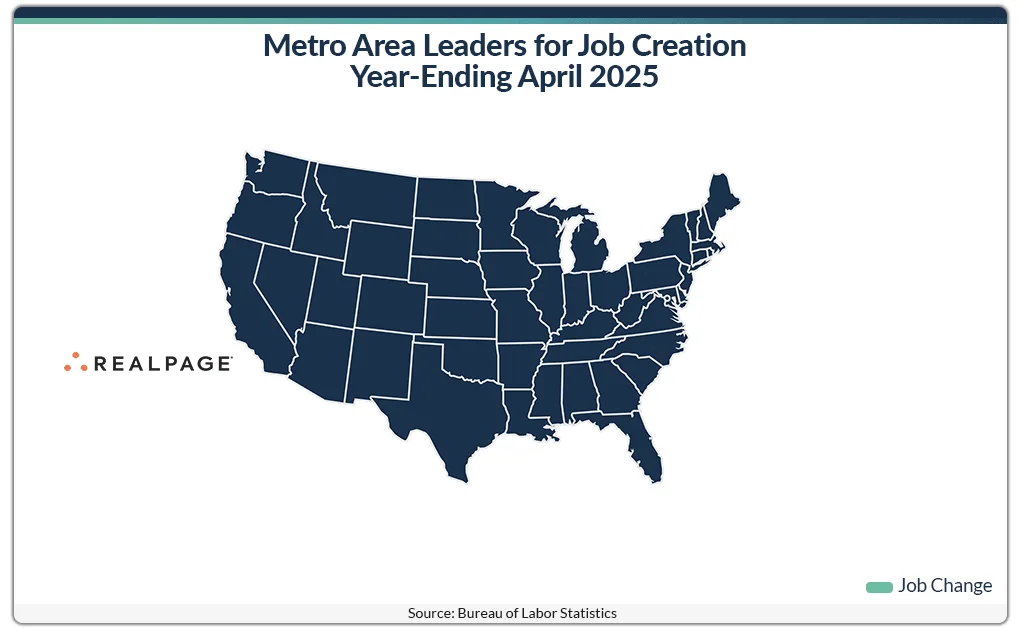
Get Smarter about what matters in CRE
Stay ahead of trends in commercial real estate with CRE Daily – the free newsletter delivering everything you need to start your day in just 5-minutes
Job Growth by Percentage
When measured by percentage change in employment, smaller metros dominated. Myrtle Beach and Charleston led the list with employment growth improvements of 20 to 40 basis points. Honolulu surged to #3 with a notable jump to 2.7% growth.
College towns like Huntsville, College Station, Fayetteville, and Jackson filled out much of the rest of the top 10, each posting growth rates around 2.5%. Salem, OR ranked #8 ahead of larger metros like Charlotte and Salt Lake City.
Overall, 51 of the top 150 US metros outpaced the national job growth rate of 1.2%, a slight improvement from last month.
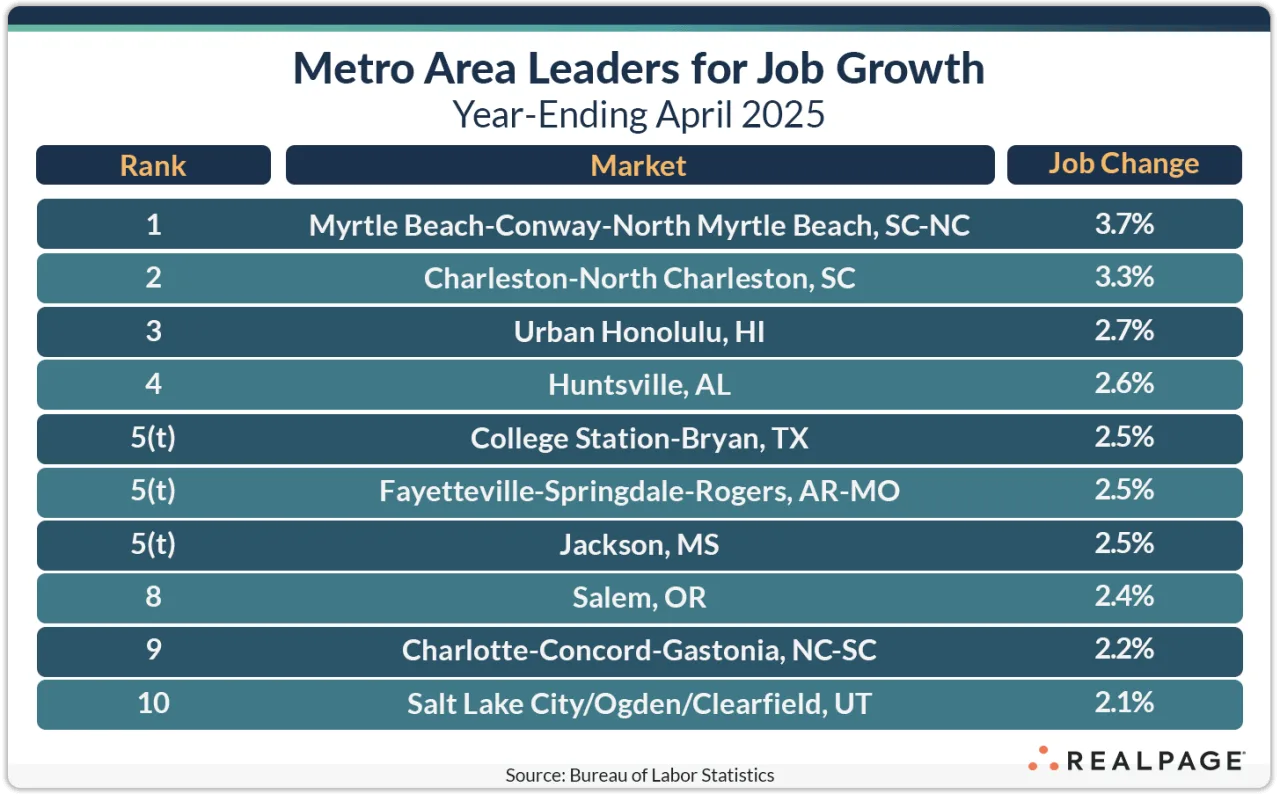
Why It Matters
Persistent job losses in tech-heavy and manufacturing regions could spell broader concerns for those sectors, particularly as national employment growth slows. As developers and investors continue to track job trends, the shift in momentum toward Sun Belt and secondary markets may influence long-term real estate and capital deployment strategies.
What’s Next
While major metros continue to add jobs, the scale of growth is declining, and more markets are reporting losses. The evolving employment landscape suggests developers and investors should monitor regional economic performance closely—especially in underperforming markets—as the broader US economy transitions into a slower growth phase.
